Part Three in a series exploring NYC’s boundaries with other municipalities.
Third in the series: Queens’ Far Rockaway
FAR ROCKAWAY is a Miss Havisham-esque doyenne whose beauty has long-since faded. No border between New YorCity and any surrounding community could be more stark: this is where the suburban ritziness of Nassau County’s Five Towns (Inwood, Hewlett, Lawrence, Woodmere and Cedarhurst) meets the inner-city grittiness of New York City. Tiffany-windowed churches stand near inner-city projects. Far Rock is a thriving neighborhood and there are surprising elements to it that make it ripe for urban exploration.
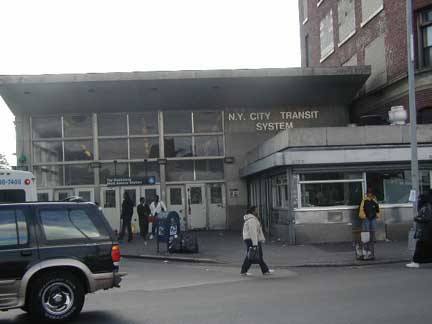
Take the A train. Like a trident, the A train has a 3-pronged terminus in Queens: Far Rockaway (above), as well as Rockaway Park on the western side of the Rockaway peninsula, as well as Lefferts Boulevard in Ozone Park. Far Rockaway can also be reached via the Long Island Rail Road (see below)
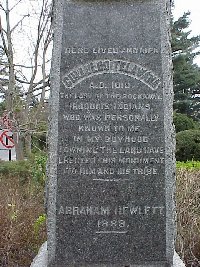
Monument to Telawana, the “last of the Rockaway Indians”; photo by Jed Ziegler
The Canarsie Indians occupied what would become Far Rockaway and the Rockaway peninsula for thousands of years before the arrival of Europeans. Surprisingly, their ancient name for the place has stuck. “Rekowacky” meant “place of our people.” Passing through a variety of spellings in Dutch and English, the spelling was finally settled with Rockaway, which has become one of New York City’s most insistent place names. There’s Far Rockaway (how far, we’ll get into shortly), the Rockaway Peninsula, Rockaway Park, four “Rockaway” subway stations, East Rockaway in Nassau County, Rockaway Avenue and Rockaway Parkway in Brooklyn, Rockaway Boulevard, Rockaway Beach Boulevard, Rockaway Breezy Boulevard, Rockaway Freeway and Rockaway Point Boulevard in Queens, Rockaway Street in Staten Island, and Rockaway Turnpike in Nassau County (an extension of Rockaway Boulevard to be exact). I don’t think this is attributable to a great desire to honor the Indians, but from a pervasive lack of imagination on the part of city planners.
After Dutch rule of the New York City area was ended by the British in 1664, the Far Rockaway area passed through Governor Thomas Dongan, settler John Palmer and later, Richard Cornell, who owned vast acreage of land along the future Queens-Nassau border stretching from the North Shore south to the Five Towns and Far Rockaway. He made his summer home in Far Rockaway during his retirement, and upon his demise in 1694, he was buried in the Cornell family cemetery, which is still there at New Haven and Caffrey Avenues (albeit invisibly to the outsider behind thick, impassable hedges).
A BIT OF BAYSWATER
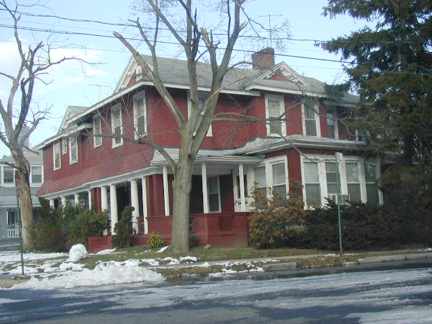
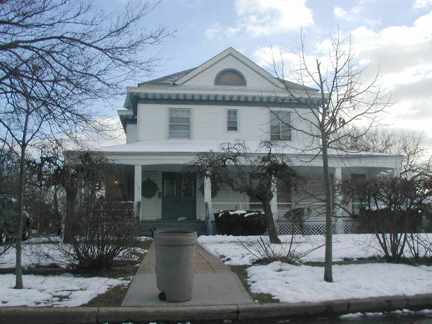
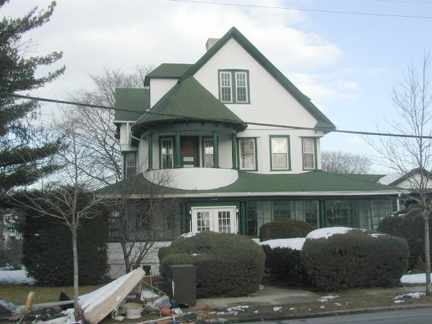
Just a sampling of the mansions found along Mott Avenue in Bayswater. The neighborhood occupies the northwestern section of Far Rockaway along Norton Basin on the west and Mott Basin on the north.
Bayswater was a planned community laid out by developer William Trist Bailey, who purchased the swampy territory from the Cornells in 1878. It was home to yacht clubs and, as you can see, attracted a wealthy crowd with aristocratic pretensions. British-style fox hunts, complete with hounds, were once held here!
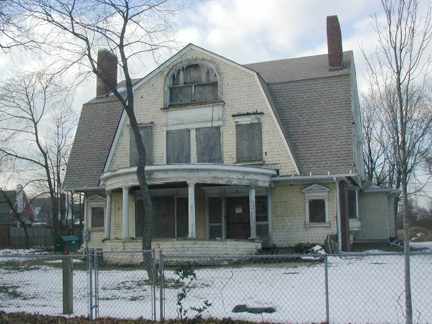
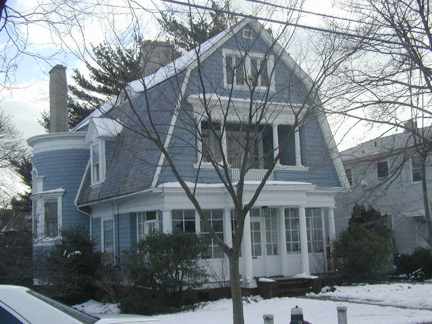
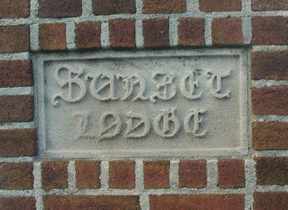
These buildings can be found along Point Breeze Place in Bayswater. I was intrigued by the building at left’s faded glory. A signpost in front reads “Sunset Lodge.”
Bayswater is one of those NYC neighborhoods that nobody who lives outside the area has ever heard of. It’s tucked away far from Manhattan, and practically no mass transit intrudes here except the bus that goes up and down Mott Avenue, the street named for the prominent family that connects Far Rockaway’s three main neighborhoods (Bayswater, Far Rockaway proper, and Wavecrest.)

While exploring Bayswater, I came upon these old Cornell beverage bottles. Since Richard Cornell was an iron magnate, it’s unlikely his family later got into the beverage business (Cornell Beverages is located in Williamsburg, Brooklyn). Still, you never know.

Along Beach 32nd Street
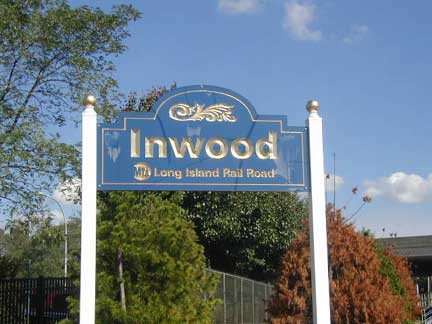

The Long Island Rail Road Inwood station is just a few feet away from Queens, although it is situated in one of Nassau County’s Five Towns. Doughty Boulevard (right) parallels the city line for a few blocks without ever entering NYC. There’s a grade crossing over the LIRR. The 10-year-old Nassau Expressway (US878) is out of the picture to the right. Once planned to stretch to Kennedy Airport, it was built piecemeal; the part of it in the Five Towns reaches only to Rockaway Turnpike, which changes its name to Boulevard once it reaches the NYC line at Meadowmere Park (scroll down this Forgotten NY page for a look at that neighborhood). To the west of Doughty Boulevard, we encounter the Redfern Houses on the avenue of the same name in Queens.

Turning from Doughty onto Central Avenue, which keeps its name once in Queens, the borough announces itself, and the heroes of yesterday still hold sway. I’d say this is a campaign sticker from 1993 since the word “re-elect” isn’t there.

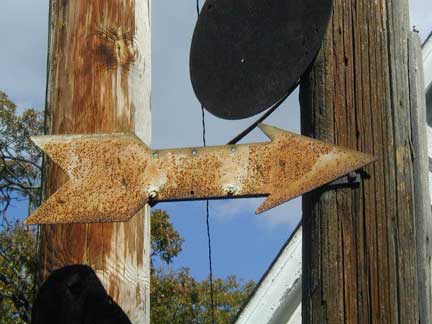

Walking generally south along zigzaggy Virginia Street in a naighborhood of pleasant frame houses, there’s a real find at Bolton Road: a one-way sign of ancient vintage. NYC’s original one-way signs were white arrow-shaped signs with One-Way spelled out in black. They were replaced by the current flock of rectangular black signs in the 1970s after a midterm interregnum of white signs with black ‘arrowheads.’ Because of the city’s relentlessly thorough sign-replacement policy, an original one-way sign from the 1910s or 20s is rare indeed. But here it is, in one of NYC’s remotest outposts. Sharp-eyed observers will note upside-down type on the sign; it has been turned upside down over the years, and now points to a house instead of the actual direction traffic should go (see the newer sign adjacent to it).
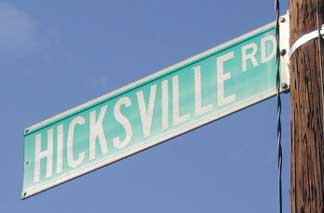
For reasons known only to the long-gone people who named them, some streets in Far Rockaway are named for other Long Island communities, such as Hicksville, Brookhaven, Greenport, Plainview, and some not in Long Island, like New Haven, Virginia and Frisco (sic).
It’s not easy in 2004 to reach these Long Island towns directly from Far Rockaway by car and they were probably named in the days when the tin lizzie was your fastest means of transportation, or even a horse and cart.
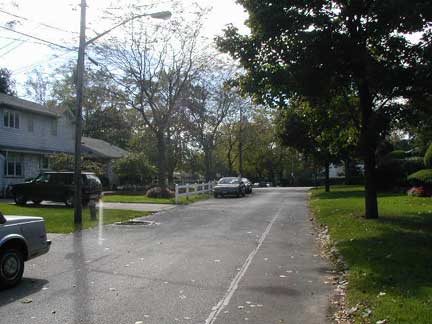

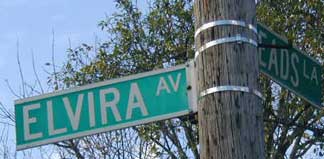
It’s certain that pastoral Elvira Avenue is not named for The Mistress of the Dark, but here’s an opportunity to show her picture. (A short street in Bay Ridge named Elvira Court got its name changed to Louise Terrace decades ago.)

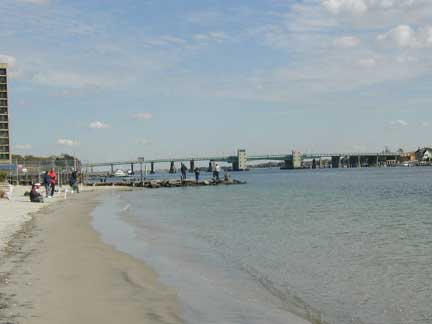
Reach the beach. In its salad days Far Rockaway was a resort town par excellence and had dozens of Victorian mansions (enough to rival those in today’s Cape May, NJ) built near the water’s edge, as well as casinos, parks and nightclubs. Today the waterside mansions and clubs are all gone, remembered only in street names like Ostend Court, which recollects the old Ostend Hotel and Casino.
At right, there is a view of the Atlantic Beach Bridge, opened in 1952. Believe it or not, the bridge charged a 5¢ toll for pedestrians & cyclists, (and a quarter for cars) until the Sensational Seventies, when the bridge was finally paid for. You had to pay the toll and pass through a turnstile!
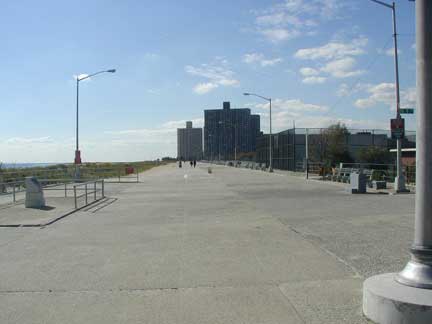
The Rockaway Boardwalk (known officially as Ocean Promenade) one of the longest on the East Coast, starts here at the foot of Beach 9th and runs west to Beach 126th.
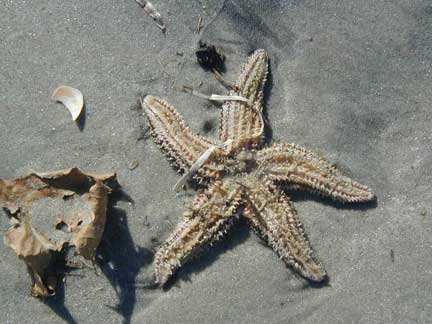
A five-armed echinoderm patiently waits for a seagull to come and eat him or Spongebob to rescue him.

We’re knocking on heaven’s door: Forgotten NY arrived too late in the season to sample the Almost Paradise sandburgers.
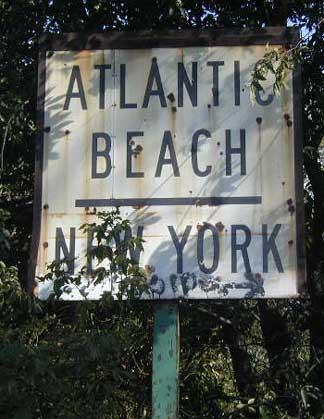
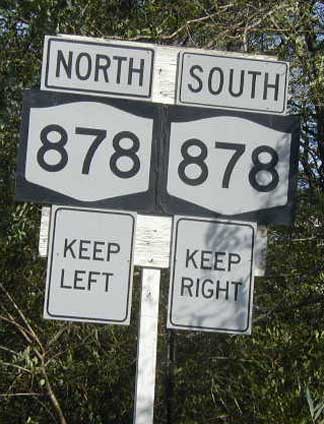
Near Almost Paradise along Seagirt Boulevard, another ancient (1950s vintage, like your webmaster) points the way to the Atlantic Beach Bridge while a few feet ahead, a newer sign advises the motorist that State 878 (Nassau Expressway) is just ahead. The area is politically noncommittal if you go by the signs.

The Roy Reuther Houses near the Atlantic Beach Bridge is Far Rockaway’s tallest skyscraper. The project was built in 1971 under the auspices of the United Auto Workers. It’s visible for miles and, without any real competition, seems to rise straight out of the sand dunes. It is occupied mostly by retirees.
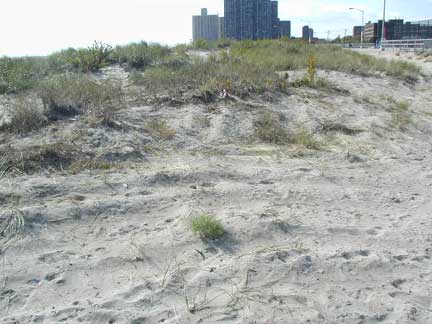
Dune just fine? Looking west toward Edgemere. Vast acreage along the Atlantic Coast along the Rockaway peninsula is abandoned. Once-desirable land used for bungalows, casinos, mansions and resorts remains resolutely empty. NYC must have more undeveloped waterside land than any other North American city.
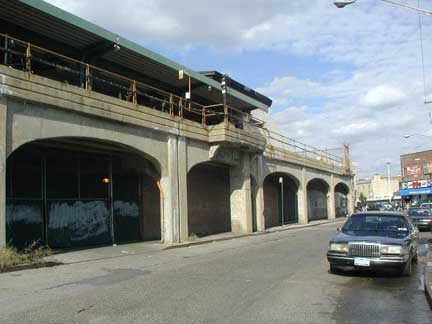
Along Beach 22nd Street near Far Rockaway station.
In Far Rockaway you will find a rare New York City example of railroad rehabilitation. As late as 1953 the Long Island Rail Road provided service from Penn Station all the way to Rockaway Park (with a change of train along the way). However, when its ancient wooden trestle spanning Jamaica Bay burned down that year, LIRR service was suspended and never revived. Enter the NYC Transit Authority, which rebuilt the span and connected it to the remaining section of its mostly torn-down Fulton Street El, and voila, subway service to Far Rockaway began in 1956. That was the last section of trackage the subways would add for passenger service until 1967!
Until the 1940s the LIRR operated on the Rockaway peninsula mostly at grade, until this lengthy concrete trestle was constructed to take the railroad above street traffic. It is the longest such trestle in the city (a much shorter one takes the IRT Flushing #7 line above Queens Boulevard in Sunnyside).
LIRR trackage was connected to the TA’s subway section till 1955 when it was severed.
Forgotten Fan Jim Guthrie has some additional information and amendments to the above:
1.The LIRR continued to operate to Rockaway Park through Far Rockaway for five years after the trestle burned, running trains via Valley Stream. Before the trestle burned, trains ran from Penn Station and Brooklyn to Rockaway Park, but also across the trestle to Far Rockaway and Valley Stream and back to Brooklyn or Penn Station –no change of trains at all. In fact, one could ride from Flatbush Ave to Penn Station on one train via the Rockaways.
The connection at Far Rockaway was severed with the end of service in 1955. The TA started on Jun 28, 1956 — photos of the first train that includes a young child with thick classes with his nose pressed against the window would be photos of me.
2. However, the 1956 addition of the Subway was not the first subway service to the Rockaways. The BRT (predecessor to the BMT) ran direct service to Rockaway Parkfrom Chambers Street in Manhattan in the summer. A ramp connected today’s J Line to the Long Island Rail Road in East New York (Chestnut Street).
What’s more, the LIRR ran through trains from Rockaway Park to Chambers Street over today’s J Line and the Willy-B as well — at least between 1915 and 1916.Who says the LIRR didn’t go to downtown Manhattan?
Further east, the LIRR ran trains from places like Oyster Bay to the Rockaways –the track layout at both Mineola and Valley Stream included direct connections. Such service went away in the early 1920s.
Robert Moses was responsible for building the LIRR “Elevated” in concrete in the early 1940s.
Finally, there’s more of a connection to today’s Nassau County than meets the eye — but Rockaway people know it whenever they get their electric bill. The Rockaway Pensinsula was part of Hempstead until consolidation in 1898, when Queens was split and Nassau became independent. Hempstead Township was split along the jury-rigged line you note on the website. The electric power comes from the Long Island Power Authority — NOT Con Ed. LIPA is successor to Long Island Lighting, whose predecessor’s Hempstead Township franchise included today’s Rockaways.
WHAT’S HOT AND WHAT’S MOTT
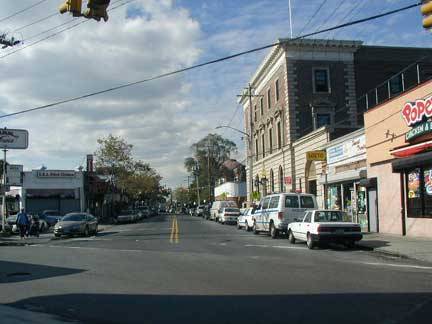
Though Richard Cornell was Far Rockaway’s first European settler, the Mott family was its most prominent landowner; Mott Avenue is Far Rockaway’s longest avenue (excepting Beach Channel Drive, which extends west to Jacob Riis Park near the Marine Parkway Bridge).
Mott Avenue begins inauspiciously at Frisco Avenue and Beach 13th Street, but picks up steam and by the time you cross Cornaga Avenue (right) you are in the heart of Far Rockaway, where there are some interesting artifacts to be seen. Far Rock’s 1910s-era police precinct house is shown on the right side of the photo.
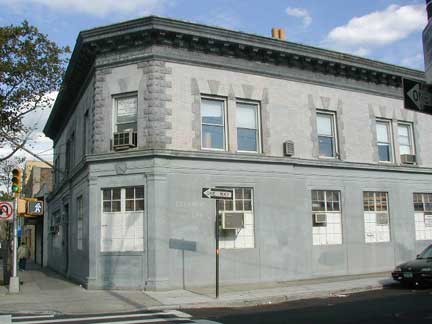

Ghosts rattle their chains along Central Avenue. This was once a branch of Rockaway Savings Bank, acquired via merger by Jamaica Savings Bank in 1957.
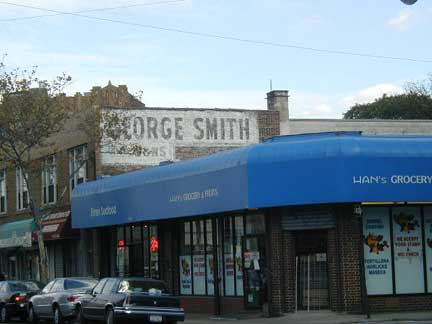
George Smith was an auto parts distributor on Central Avenue.

The old Rockaway News building on Central Avenue. Rockaway News started printing in 1900. Far Rockaway is currently served byThe Wave, an even older newspaper which triumphed in the newspaper wars.

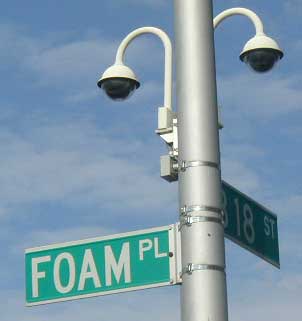
Far Rockaway (like Coney Island) is rife with side streets and alleys with sea-oriented theme names, such as Foam Place; on a lamppost are what appear to be smaller lamps but are really security cameras guarding an athletic field.
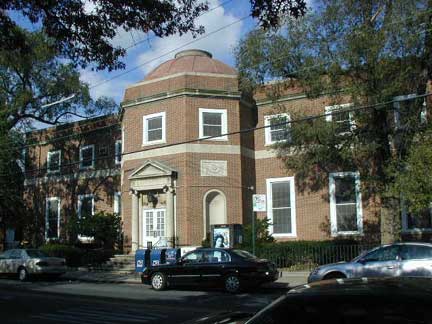
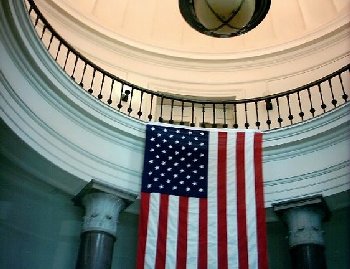
Far Rockaway’s post office on Mott Avenue is listed in the National Register of Historic Places, one of two Far Rock locations to be so designated (the other is Russell Sage Memorial Church on Beach 12th Street, which contains a large glass window designed by Louis Comfort Tiffany). Photo right: Richie McCarey
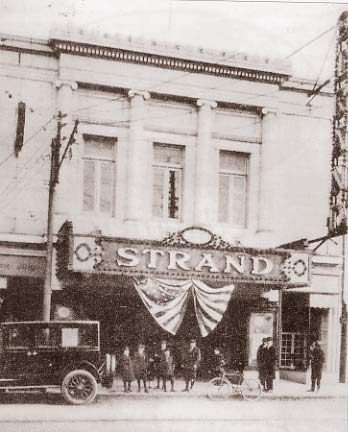
Strand Theatre, opening day 1919. From Old Rockaway, NY in Early Photographs (see below)
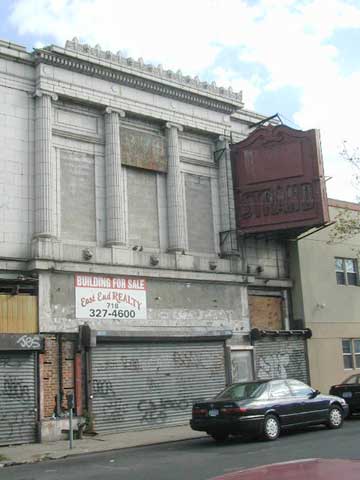
You ain’t seen nothin’ yet. The Strand Theater, on Beach 20th and Cornaga, opened as a vaudeville palace in 1919 and in the 20s, saw Al Jolson and Sophie (“Last of the Red Hot Mamas”) Tucker tread its boards. The Strand later became a movie theater and has been closed for nearly a quarter century; the “for sale” sign has been there since I started exploring Far Rock in the late 1990s. It’s waiting for a developer to raze it for some brick boxes.
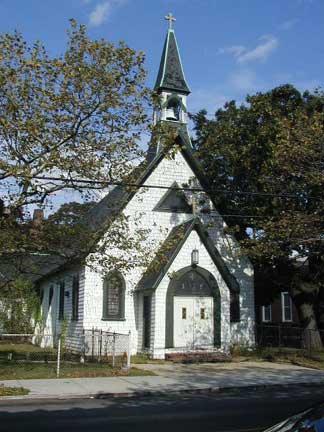
St. John’s Episcopal Church, now the Beth El Temple on Mott Avenue, has survived since the 1880s and is one of the area’s oldest extant houses of worship.
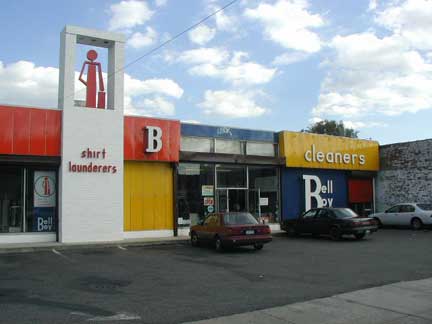
Sometimes, modern architectural design (with the exception of Mr. Wright) gets a bad rap in Forgotten NY. Bell Boy Cleaners, up the block from the old Strand, is an exception; I like the building’s use of clean lines and bold, primary colors.

This is the office of Cuban-born Dr. Perla Tate, who has operated a gynecological practice here for more than a decade. Dr. Tate should really get a sign maker who can spell, though.
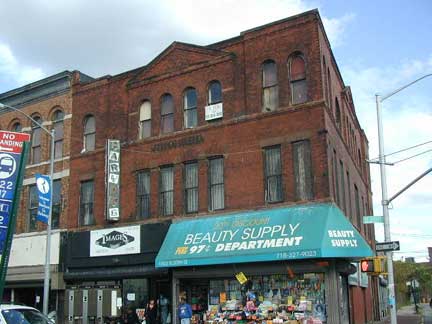
The Jennings Building, near the Strand at Beach 20th and Cornaga, likely dates to the 1915-1920 period. An extinct toy store’s sign can still be seen on the left of its façade.
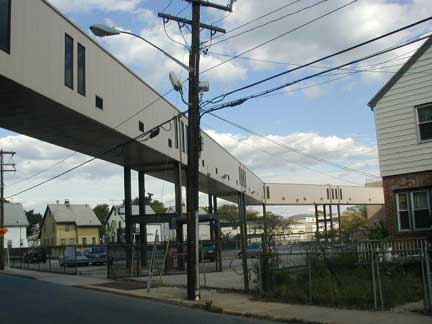
The longest pedestrian bridge I’ve seen in NYC connects a hospital and nursing home and extends for a length of about three blocks.


A touch of Far Rock’s seasonal legacy can be seen in this row of bungalows and the building at right, which resembles a renovated hotel from the resort era with alterations (I can’t be sure of its age). Bungalows like this once lined each and every street from Wavecrest (a planned suburban community built from 1878-1880) all the way to Rockaway Park, about 3 miles west. My friends rented such a bungalow on Beach 98th Street a stone’s throw from Rockaway Playland in the summer of 1982. Both the bungalow and Playland would be razed before the 80s were over.
What is ‘far’ about Far Rockaway? I had always guessed it was named for its distance from the rest of Queens or from NYC, but it’s had this name from the start, even before it became a part of NYC beginning in 1898. It was so named for its distance west from the older town of Near Rockaway (now called East Rockaway). Both towns were originally in Queens County, but Near Rockaway became a part of the new Nassau County when Queens’ three eastern counties decided to secede (without firing a shot) in 1898, the same year Queens became part of NYC.
SOURCES:
Old Rockaway, New York in Early Photographs, Vincent Seyfried and William Asedorian, Dover Publications 2000
BUY this book at Amazon.COM

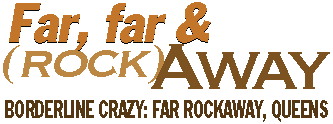
1 comment
[…] in the Bayswater neighborhood of the Far Rockaways. (This neighborhood is actually better known for its gorgeous mansions.) Not surprisingly, every room in this home is small, but at least you have a back patio to spread […]
Comments are closed.